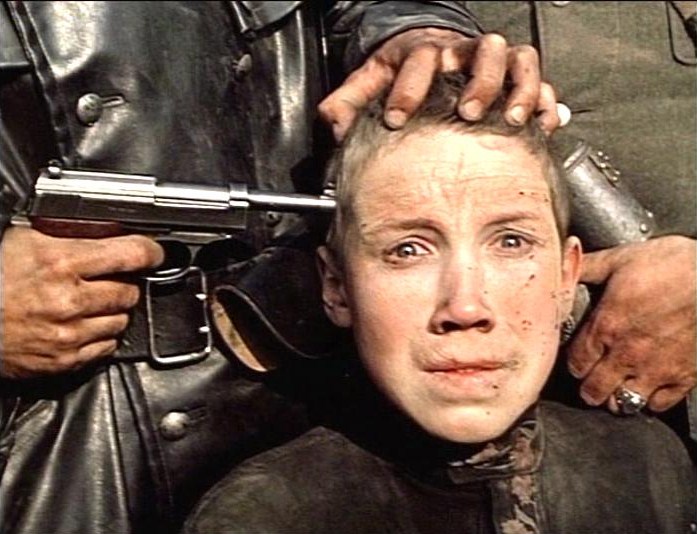
“Ninety percent of everything is crud.” – Theodore Sturgeon
Welcome back to “The Ten Percent,” a regular column where every other week K. Dale Koontz and I take a look at the inverse of Sturgeon’s Law; in other words, the small portion of everything which is not crud. So many films premiere each year, but only a very few are remembered and revered years later. That’s not a matter of genre – the Ten Percent is a big tent, with plenty of room for comedy, drama, horror, animation, musical, science fiction and many more. But admission into the tent is not easy to come by. Films in this category last because they are high quality productions which demand more of their viewer than simple passive reception.
Elim Klimov’s Come and See (1985) takes its place in an unusual corner of the Ten Percent. A place for works of art that are so powerful, so honest, and so terrible that they absolutely must be seen, but which are also so psychologically and emotionally intense that they are revisited only rarely. The late Roger Ebert wrote that Come and See “is one of the most devastating films ever about anything, and in it, the survivors must envy the dead,” while Mark Cousins called Come and See “the greatest war film ever made.” Both are correct.
The film follows a young, teenage boy named Florya (Alexi Kravchenko) who joins an anti-German partisan group in Belarus in 1943. He meets a beautiful girl, Glasha (Olga Mironova), just two or three years older than he, and the two become separated from Florya’s unit as it is attacked by German dive bombers. Come and See then follows the two teens as they journey into an unrelenting hell. Historians believe that Belarus (at that time called the Byelorussian SSR) was the hardest hit of the Soviet Republics in World War Two, with the Germans destroying 209 of the regions 290 cities, 85% of its industry, and killing between 2 and 3 million people (a quarter to one-third of the total population) between 1941 and 1944. 90% of Belarus’s Jewish population was murdered in the Holocaust. As the Red Army inexorably began to push the Germans back through Belarus, the Wehrmacht and various SS units, including the notorious 36th Waffen SS Grenadier Division, the “Dirlewanger Brigade,” engaged in a scorched earth policy that eradicated farms, villages, cities, crops, animals, and humans by the tens of thousands.

This is where Florya and Glasha, still innocents despite the world around them, walk. Step by step, everything that is good, beautiful, pure, and innocent in the world is ruthlessly brutalized and then slaughtered by the war, including Florya and Glasha, although both physically survive their experiences. Come and See is horror at its most sublime, and is likely the closest any film has yet come to capturing the realities of war, particularly as it was fought in the Eastern European Theater.
The film’s title is taken from the Book of Revelation 6: 7-8:
And when he had opened the fourth seal, I heard the voice of the fourth beast say, “Come and See.” And I looked, and behold a pale horse: and his name that sat on him was Death, and Hell followed with him. And power was given unto them over the fourth part of the earth, to kill with sword, and with hunger, and with death, and with the beasts of the earth.
And this is exactly what the film invites the viewer to see – an utter apocalypse that devours everyone and everything in its path. By the time the end credits roll, Florya and Glasha have learned that things like love and morality and goodness are just tissue-paper in a firestorm, consumed without even being noticed, while ideals of meaning or God are laughable illusions in the naked face of war. There are no other films like Come and See, and the number which can even come close to its unflinching gaze into reality can be counted on one hand with digits to spare. It is a work of art that is almost too painful to endure. It is required viewing – even if only once, for it lies in the darkest part of the Ten Percent.

Ensley F. Guffey and K. Dale Koontz are co-authors of Wanna Cook? The Complete, Unofficial Companion to Breaking Bad, and of the forthcoming A Dream Given Form: The Unofficial Guide to the Babylon 5 Universe. You can find Dale online at her blog unfetteredbrilliance.blogspot.com and on Twitter as @KDaleKoontz. Ensley hangs out at solomonmaos.com and on Twitter as @EnsleyFGuffey.


You have a beautiful way with words, and now, I want to see this film